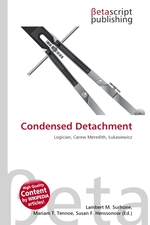Condensed Detachment
Lambert M. Surhone, Miriam T. Timpledon, Susan F. Marseken
бумажная книга
High Quality Content by WIKIPEDIA articles! Condensed detachment (Rule D) is a method of finding the most general possible conclusion given two formal logical statements. It was developed by the Irish logician Carew Meredith in the 1950s and inspired by the work of ?ukasiewicz. If the most general unifier is used in condensed detachment, then the logical result is the most general conclusion that can be made in the given inference with the given second expression. (And since any weaker inference you can get is a substitution instance of the most general one, nothing less than the most general unifier is ever used in practice.)In some logics (such as standard PC) have a set of defining axioms with the "D-completeness" property. If a set of axioms is D-Complete, then any vaild theorems of the system can be generated by condensed detachment alone. Note that "D-completeness" is a property of an axiomatic basis for a system, not an intrinsic property of a logic system itself.
Данное издание не является оригинальным. Книга печатается по технологии принт-он-деманд после получения заказа.


